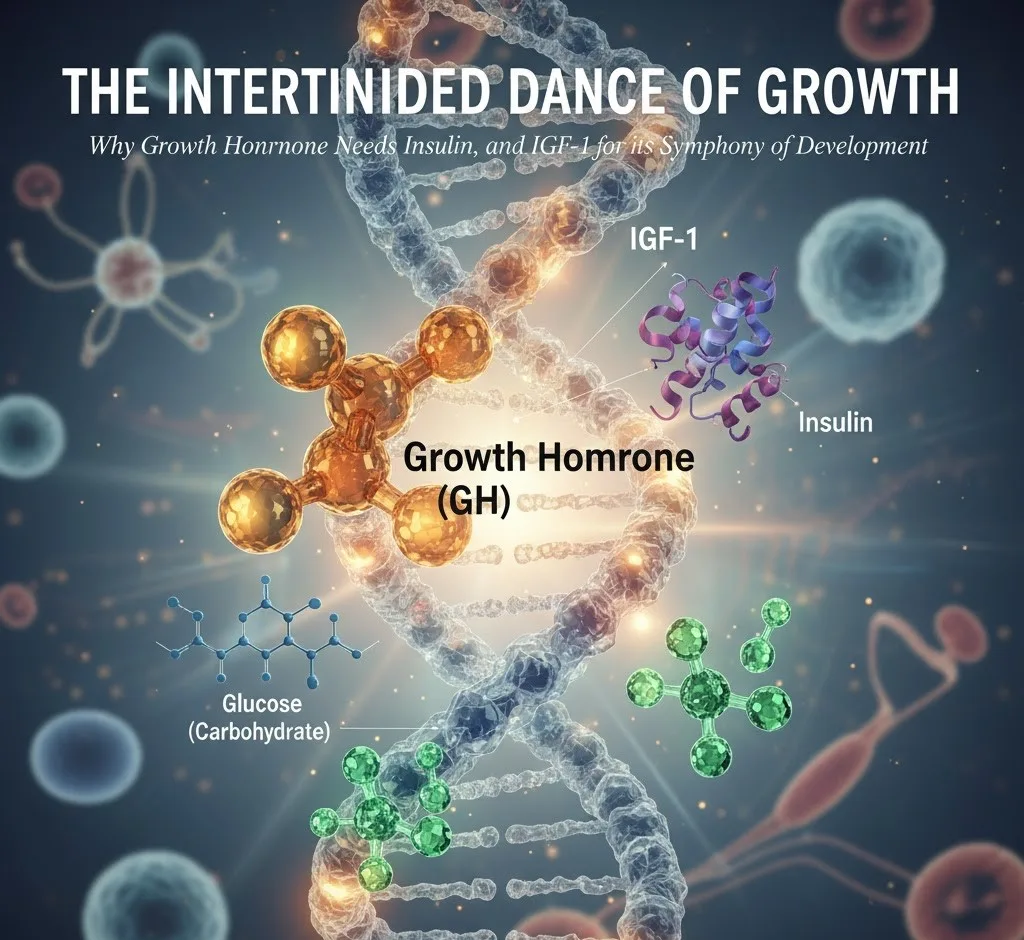The intricate process of growth in the human body is far more complex than a single hormone acting in isolation. While Growth Hormone (GH) is a primary driver, its efficacy is deeply reliant on a synergistic relationship with other vital components: insulin, carbohydrates, and insulin-like growth factor 1 (IGF-1). This fundamental interplay, highlighted in physiology texts like Guyton and Hall, underscores a crucial principle in endocrinology: hormones rarely work alone.
Growth Hormone: A Master Regulator with a Catch
Growth hormone, secreted by the anterior pituitary gland, is renowned for its role in stimulating tissue growth, protein deposition, and the overall development of the skeletal frame. It orchestrates growth through several mechanisms, including increasing protein synthesis in cells, enhancing the proliferation of chondrocytes (cartilage cells) and osteocytes (bone cells), and even converting chondrocytes into osteogenic cells for bone formation.
However, GH's impressive capabilities come with a significant caveat: it cannot achieve its growth-promoting effects without the presence of adequate insulin and carbohydrates.
The Essential Role of Insulin and Carbohydrates
Imagine a construction site with the best foreman (Growth Hormone) but no raw materials or energy for the workers. This analogy illustrates why insulin and carbohydrates are indispensable for GH action.
-
Energy for Anabolism: Growth is an anabolic process, requiring substantial energy. Carbohydrates, broken down into glucose, are the primary fuel source. Without sufficient carbohydrates in the diet, cells lack the energy necessary for the intensive metabolic activities involved in protein synthesis and cell division.
-
Insulin's Permissive Action: Insulin, often known for its role in blood sugar regulation, is also a powerful anabolic hormone. It facilitates the uptake of glucose and amino acids into cells. For growth hormone to stimulate protein deposition, amino acids must first enter the cells. Insulin acts as the gatekeeper, ensuring these building blocks are available inside the cells. In fact, studies have shown that animals lacking a pancreas (and thus insulin production) or those on carbohydrate-deprived diets exhibit little to no growth response to administered growth hormone.
Therefore, adequate insulin activity and a consistent supply of carbohydrates are not merely supportive; they are absolutely essential for Growth Hormone to exert its full growth-promoting potential.
The Critical Intermediate: IGF-1
The story of Growth Hormone's action becomes even more nuanced when considering its primary mediator: Insulin-like Growth Factor 1 (IGF-1). It turns out that Growth Hormone itself doesn't directly stimulate all aspects of tissue growth. Instead, it largely acts by stimulating other tissues, most notably the liver, to produce a group of small proteins called somatomedins, the most crucial of which is IGF-1.
-
GH's Indirect Pathway: Growth Hormone's influence on cartilage and bone growth, for instance, is predominantly indirect. GH stimulates the production and release of IGF-1, and it is IGF-1 that directly mediates many of the growth-promoting effects attributed to GH.
-
A "Growth Factor" in Its Own Right: IGF-1 earned its name because its molecular structure is similar to proinsulin, and it exerts potent growth-stimulating effects on various tissues. Its concentration in the bloodstream directly reflects the rate of growth hormone secretion, serving as a reliable indicator of GH activity.
This means that for the full spectrum of growth to occur, a healthy individual needs not only sufficient Growth Hormone but also robust production of IGF-1, which itself is stimulated by GH.
The "Big Picture" of Growth
In summary, the growth process is a tightly integrated system where multiple components must work in harmony:
-
Growth Hormone initiates the cascade.
-
It stimulates the production of IGF-1, which directly mediates many growth effects.
-
Both GH and IGF-1 require a foundation of carbohydrates for energy.
-
Insulin is crucial for facilitating the uptake of these energy sources and building blocks (amino acids) into cells, allowing the anabolic processes driven by GH and IGF-1 to proceed.
Disruptions in any part of this intricate chain—whether insufficient growth hormone, poor dietary carbohydrate intake, inadequate insulin sensitivity, or impaired IGF-1 production—can significantly impair normal growth and development. This integrated view highlights why maintaining overall metabolic health is paramount for optimal physiological function, especially during periods of active growth.

